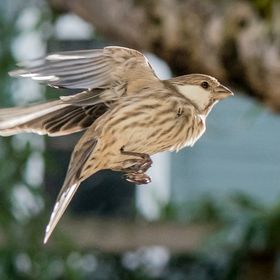Bee on aster at McKenzie Bridge, Oregon JE4A9569 - Version 2
Bee on aster at McKenzie Bridge, Oregon JE4A9569 - Version 2
Read less
Read less
Views
216
Likes
Awards
Zenith Award
Staff Winter Selection 2015
Superb Composition
Top Choice
Absolute Masterpiece
Outstanding Creativity
Peer Award
Superior Skill
All Star
Magnificent Capture
Top Ranks
Categories
Same photographer See allBehind The Lens
Discover more photos See all
Behind The Lens
Location
This photo was taken on the side of a building at St. Benedict's Lodge in McKenzie Bridge, Oregon, where I was attending a harmony singing camp.Time
This was captured in the late afternoon, after the afternoon singing session and before dinner.Lighting
When I am shooting bees, I am looking for two things before squeezing the shutter: to see the eyes, and for any light shining off the wings.Equipment
I rented a camera and lens for this trip, a Canon EOS 7D Mark II and the lens was a Canon 24-70mm f/2.8L II. I also used old aluminum Manfrotto tripod that my husband found at a garage sale for a dollar.Inspiration
I had been taking photos of flowers for a couple of years, and had an urge to capture something in motion because of the extra challenge. It was exciting to see the images later, and get a closer and longer look at a live insect than was possible in real life.Editing
All the post-processing was done in Aperture. It was originally a much wider shot, so it is significantly cropped. I turned down the highlights and the shadows, sharpened it, bumped up the vibrance a little and added a little radial vignette around the edges.In my camera bag
I normally use a Sony a6000 camera body, either with the kit lens, or one of three mid-1970s Pentax vintage SLR prime lenses, that I got as a teen. (I missed those lenses, which was one of the reasons for getting the mirrorless--with an inexpensive adaptor, I can use old lenses. I normally carry the camera body, three batteries, a quick release plate, this big clunky tripod, and a wired shutter release.Feedback
With bees and insects, use a tripod, and a wired shutter release (which I find to be more reliable than a wireless). See which flowers the bees seem to like. A macro lens is nice, but not essential. Choose a flower that looks good in a composition and won't obscure the view of the bee. This photo was captured at 1/60th of a second--I would normally use a faster shutter speed. Then wait patiently for the bee to arrive in your frame. Sometimes I use continuous shooting, and sometimes single shots. When editing, keep only images that show the bee's eyes and wings. it is a rare picture of a bee's back end that is worth keeping. Look for the sun to glint off the wings and shine off the eyes.













































